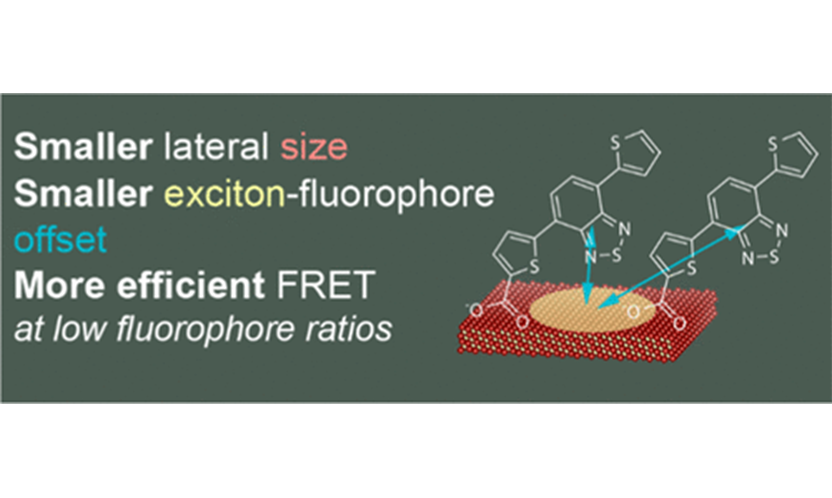Lateral Size Dependence in FRET between Semiconductor Nanoplatelets and Conjugated Fluorophores

Sensitization of organic molecules by semiconductor nanocrystals is a promising way to boost the absorption of the former, important for applications in fluorescence labeling and photocatalysis. Semiconductor nanoplatelets provide the opportunity of increasing the absorption cross section by increasing the lateral dimension without inducing changes to the band gap. However, the lateral size dependence of FRET in nanoplatelet small-molecule conjugates is unknown. Our FRET study supports the view that excitons in nanoplatelets are localized in a small area and spatially distributed in a stochastic fashion. In larger nanoplatelets, the likelihood of an offset between the position of the exciton and the acceptor increases. Although this could be mitigated by increasing the number of fluorophores, excessive coverage of the nanoplatelets with the fluorophores leads to severe self-quenching. Based on these results, we predict that using few fluorophores on nanoplatelets with edge lengths of ∼9 nm would optimize the delicate balance between maximizing the absorption cross section of the nanoplatelets and minimizing the likelihood of exciton–fluorophore offset and self-quenching simultaneously, thus leading to optimal FRET conditions.
